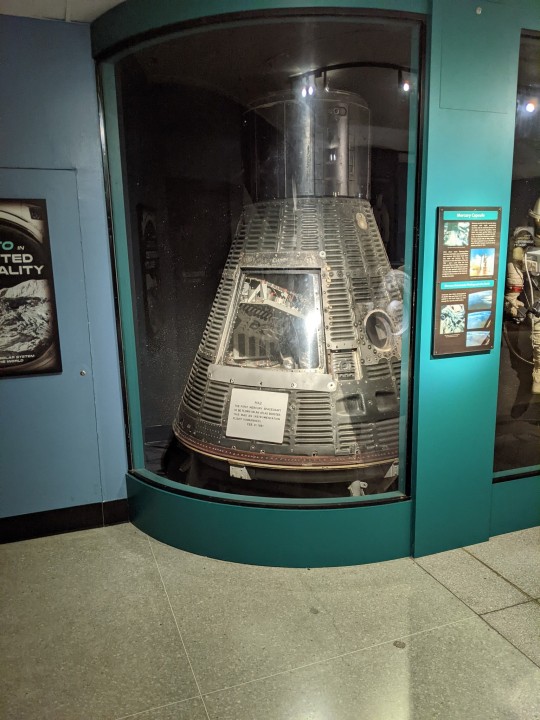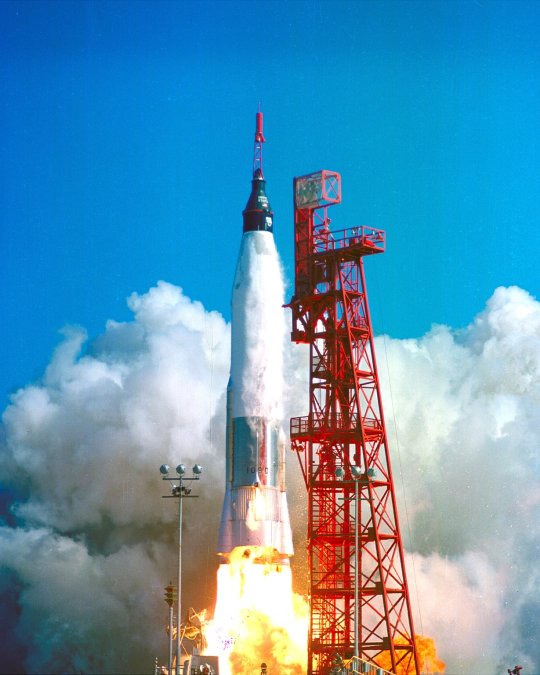#Atlas-109D
Explore tagged Tumblr posts
Text



I was with my family at the Houston Natural History Museum the other day and saw they have an early Mercury Capsule on display. This one was flown on Mercury Atlas 2.
#Mercury-Atlas 2#MA-2#Mercury Spacecraft No. 6#Mercury Program#NASA#Project Mercury#Mercury#Atlas#Atlas LV-3B#Atlas-109D#Rocket#February#1961#my post
82 notes
·
View notes
Text

"Big Joe ready for launch at Cape Canaveral, FL. The objective of 'Big Joe' was to test the ablating heatshield. The flight was both a success and failure – the heatshield survived reentry and was in remarkably good condition when retrieved from the Atlantic. The Atlas-D booster, however, failed to stage and separated too late from the Mercury capsule."
Date: September 9, 1959
NASA ID: B-59-714
#Big Joe 1#BJ-1#Mercury Boiler Plate#Boiler Plate#Mercury#Mercury Program#Project Mercury#NASA#Atlas#Atlas LV-3B#Atlas-109D#Rocket#LC-14#Cape Canaveral#Kennedy Space Center#Florida#September#1959#my post
37 notes
·
View notes
Text

The Mission Control Room at Cape Canaveral, Florida, during Mercury Atlas 6 (MA-6) mission.
Date: February 20, 1962
NASA ID: 62-MA6-161
#Mercury-Atlas 6#MA-6#Friendship 7#Mercury Spacecraft No. 13#Mercury#Mercury Program#Project Mercury#NASA#Atlas#Atlas LV-3B#Atlas-109D#Rocket#LC-14#Cape Canaveral#Kennedy Space Center#Florida#Launch#February#1962#John Glenn#John Herschel Glenn Jr.
69 notes
·
View notes
Text



"Launch of Friendship 7, the first American manned orbital space flight. Astronaut John Glenn aboard, the Mercury-Atlas rocket is launched from Pad 14."
Date: February 20, 1962
NASA ID: S62-00363, S62-00337, KSC-62PC-0011
#Mercury-Atlas 6#MA-6#Friendship 7#Mercury Spacecraft No. 13#Mercury#Mercury Program#Project Mercury#NASA#Atlas#Atlas LV-3B#Atlas-109D#Rocket#LC-14#Cape Canaveral#Kennedy Space Center#Florida#Launch#February#1962#John Glenn#John Herschel Glenn Jr.#my post
56 notes
·
View notes
Text
Launch of Big Joe-1







Big Joe-1 Mercury Atlas launch vehicle lifting off at LC-14, Cape Canaveral, Florida, for a 13 minute suborbital test flight of the Mercury Boilerplate capsule.

Flight plan of Big Joe
"Mission Objective:
Test of ablation heatshield. The nose-cone capsule for Big Joe had no retrorocket package. The inner structure held only a half-sized instrumented pressure vessel instead of a pressurized cabin contoured to the outer configuration. Built in two segments, the lower half by Lewis and the upper by Langley, the main body of the spacecraft replica was fabricated with thin sheets of corrugated Inconel alloy in monocoque construction. This model of the Mercury capsule had more than one hundred thermocouples around the capsule skin to register temperatures inside and under the heatshield, sides and afterbody."
Posted on YouTube by Retro Space HD: link
"The Atlas 10-D was programmed to rise, pitch over horizontally to the Atlantic before it reached its 100-mile peak altitude, then pitch down slightly before releasing its corrugated nose cone at a shallow angle barely below the horizontal."
The flight was deemed a success and the second flight (Big Joe 2, Atlas-20D) was cancelled. Its launch vehicle was transferred to the Atlas-Able program.
Date: September 9, 1959
SDASM Archives: 44408123, 44406619, 4501588, 44406606, 43332816, 43332828, 43332828, 43332804
NASA ID: B59-00556, B59-00557
#Big Joe 1#BJ-1#Mercury Boiler Plate#Boiler Plate#Mercury#Mercury Program#Project Mercury#NASA#Atlas#Atlas LV-3B#Atlas-109D#Rocket#LC-14#Cape Canaveral#Kennedy Space Center#Florida#Launch#September#1959#my post
21 notes
·
View notes